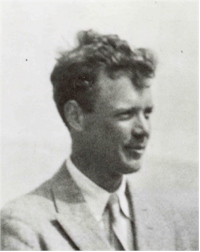FAI General Aviation Commission (GAC)
Our Sport
 Although the aeroplane has existed for as long at the FAI itself, and although the first official FAI record was set on board a heavier-than-air machine (220 metres distance achieved by Santos-Dumont in 1906), the Federation did not officially have an International General Aviation Commission until 1965.
Although the aeroplane has existed for as long at the FAI itself, and although the first official FAI record was set on board a heavier-than-air machine (220 metres distance achieved by Santos-Dumont in 1906), the Federation did not officially have an International General Aviation Commission until 1965.
General aviation is obviously the broadest FAI discipline (along with aeromodelling); the categories of aircraft and records in the field of powered flight are legion. The first aspect under consideration is the type of craft: “classic”, hydroplane or amphibious. Then comes the type of engine: piston, turboprop, jet or rocket-powered. Finally come the many categories classed according to the weight of the aircraft.
The two World Wars were to signal an age of astounding progress in aviation, both in terms of techniques and areas of application.
The period following the First World War was to see the development of postal transport then passenger transport. Thereafter, from 1949, commercial aviation was to make its entrance into the age of the jet engine, which was soon to replace piston engines and to some extend turboprops. The next twenty years were to see the large-scale development of the network of passenger and freight transport.
On June 14-15 1919, Britons John Alcock and Arthur Brown succeeded in making the first nonstop Atlantic crossing (from Newfoundland to Ireland) in 15 hours and 57 minutes. Five years later, in September 1924, the first round-the-world trip with stopovers was completed in 175 days (44,345 km and 375 hours and 11 minutes of actual flight time) by US Air Force crews on board two Douglas World Cruisers.
Probably the most triumphant exploit in the history of aeronautics was achieved on May 20-21 1927, when American Charles Lindbergh, on board the legendary Spirit of Saint Louis, made the first solo non-stop transatlantic flight, from New York to Paris, in 33 hours and 30 minutes.
The 1930s saw the emergence of commercial aviation, which was soon to thrive. From 1939 to 1945, even more than in the 1914-1918 War, aviation was to be called upon to play a decisive role in global conflict.
Soon after the armistice, aeronautical performance began once again to bring down those symbolic barriers, such as the sound barrier in 1947.
FAI World Championships have been held annually since 1975 when the first Precision Flying Championship was held in Gävle-Sandvikens (Sweden) in August 1975.

